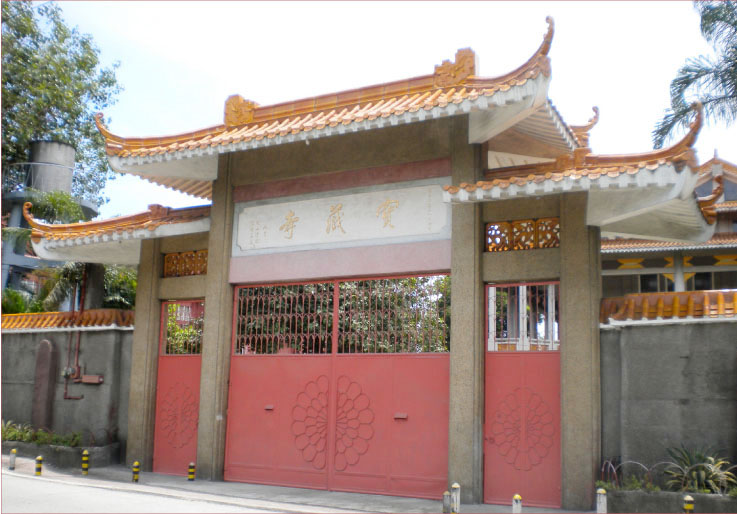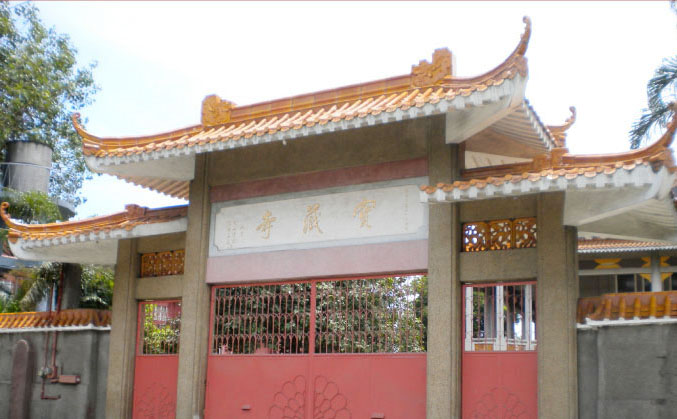Editors Note: This is the 17th of a series about the 36 Chinese Buddhist temples of the Philippines. Much of the information is from a thesis of Venerable Chuanmiao (Hsuan Chuang University, 2008), a Buddhist monk affiliated with the Thousand Buddha Temple in Quezon City.
17. Poh Chong Temple (寶藏寺)
35 C. Benitez Street, Cubao, Quezon City Tel.: 725-2066
This temple was built in 1948 by the lay sister Xiuyin (修因), soon after the end of the Second World War. Born in Hui’an (惠安), Fujian, she became a lay sister at 18.
She arrived in the Philippines in 1929 and engaged in personal spiritual practice in Cabanatuan and Manila until she could buy land in Cubao, Quezon City in 1947.
The area was still undeveloped and devotees would go from downtown Manila and consider it an excursion. More facilities, including a small park with a pond and a pagoda, were built in the 1960s.
Xiuyin passed away in 1968 and another lay sister, Shuzhen (淑真), took over. She was a relative of Xiuyin, also from Hui’an, and was invited by Xiuyin to come to Manila in 1960.
In 1977, Shuzhen shaved her head and became the nun Zhengdao (正道) in a ceremony where the monk Zhengzong (正宗) presided.
In 1984, Zhengdao began a long-term project to rebuild the main temple building. She raised the money without approaching major benefactors and took 10 years to finish the project.

Main buildings. The temple is accessed through C. Benitez Street, but the gate opens to the back of the temple. The temple’s entrance faces a creek, and feng shui principles dictated the water must be in front while the backside of the temple should be on more solid ground. The building’s front entrance is therefore a very serene place, looking out to a garden with a pagoda, and a pond where there are two pavilions connected by a bridge. The main temple building has two floors. Maitreya and the Thousand Hands Thousand Eyes Guanyin are enshrined on the ground floor, and the three Buddhas are enshrined upstairs. A side building houses the ancestral hall and the monastics’ quarters.
Leadership and primary activities. There are three nuns at the temple, headed by Zhengdao. The temple has a small core of regular devotees, and Zhengdao is very cautious about allowing others to access the temple. Feast days highlighted at this temple are those of Guanyin and Ksitigarbha, and the beginning and end of the lunar year. —First published in Tulay Fortnightly, Chinese-Filipino Digest 25, no. 22 (April 23-May 6, 2013): 8.
